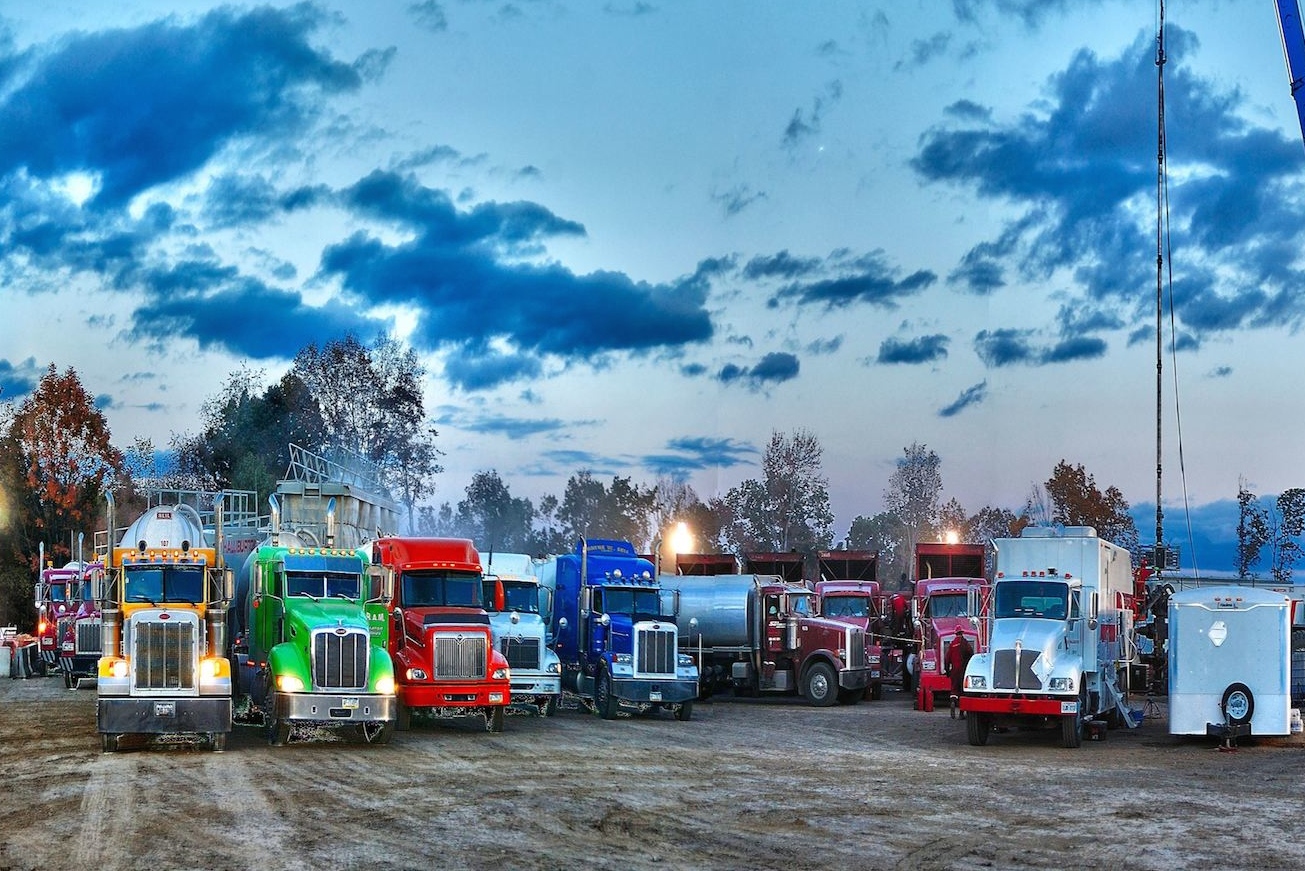Mike McCawley has studied the health effects of welding fumes, coal dust, and the volcanic ash from Mt. St. Helens.
When he started to studying the potential health effects of fracking a few years ago, he began hearing stories from residents and medical professionals in fracking areas of children getting asthma and an increase in cardiovascular disease.
“In epidemiology, that’s usually considered a sentinel event when people start saying “well I’m noticing this upswing,’” says McCawley, an environmental scientist at West Virginia University’s Department of Occupational and Environmental Health Sciences. “So it’s it’s not proof positive but it’s something to make you sit up and take a closer look.”
These anecdotes were followed by studies showing similar trends. Recent National Institutes of Health-funded studies show increased rates of hospitalization, asthma, premature birth and headaches near fracking sites.
But these studies couldn’t explain why these effects were showing up.
LISTEN: “On Health Effects, Blame the Trucks, Not the Fracking?”
McCawley knew some of these symptoms were common in people exposed to diesel fumes, and thought these health impacts could have been tied to diesel emissions at well-pads, from equipment used to drill and frack for natural gas.
Then a few years ago, he had an epiphany, standing on a street in Montrose, in northeastern Pennsylvania, during the height of the fracking boom.
“I stood in downtown Montrose and watched trucks go by through this tiny town,” McCawley says. “And about every 45 seconds there was a heavy duty diesel truck that came by, and it didn’t matter what time of day was.”
Diesel engines emit a large number of tiny solid and liquid masses called “ultra-fine particles”, McCawley says. These particles have been linked to asthma, lung cancer, and heart disease.
Ultra-fine particles are even smaller than so-called ‘fine particles’, or PM 2.5, which are 2.5 micrometers in diameter or less. The EPA regulates PM 2.5, but not ultra-fine particles, which are 0.1 micrometers or less.
“They’re basically just a clump of molecules,” McCawley says.
These particles are small enough to slip inside the pores of a human cell, McCawley says, and once inside, can trigger inflammation inside the cell.
“Inflammation generally tends to be the root cause of almost all disease. And one of the more notorious sets of diseases are developmental diseases in fetuses,” McCawley says.
McCawley began testing the air along roads near fracking sites in West Virginia on a grant from the Department of Energy. He saw concentrations of ultra-fine particles similar to what you would find in a big city, or near a highway. He says that makes sense, since each gas well requires between 4,000 and 6,000 truck trips to haul equipment and material to the well site. And he’s written a review recently staking out the idea that scientists should consider truck traffic more closely when looking at the impacts of the fracking boom on public health.
In Scenery Hill, Pa., Lois Bower-Bjornson can hear the trucks coming up her road from the next valley over.

Lois Bower-Bjornson in front of her Washington County home as a truck passes by. (Photo: Reid Frazier)
Bower-Bjornson and her husband moved to their Washington County home from Pittsburgh 13 years ago with their young children. She became an environmental activist after watching 33 wells get built within a three-mile radius of her house. She says she knew the state highway her house was on had plenty of traffic when she moved in.
“But it wasn’t this kind of traffic,” she says. “When it was busy would be in mornings and evenings, for what we call ‘Rush hour’. But not what it is now. It’s endless. And you’ve got massive trucks, whether they’re residual waste trucks, freshwater trucks, or the crane trucks, everything you need for a well pad is trucked in.”
The gas industry has tried to reduce truck traffic by piping more water into frack sites from central impoundments, rather than using trucks.
And it’s converting some of its vehicle fleet and well-pad equipment to run off natural gas instead of diesel.
“Natural gas development, like other industrial and construction activity, often requires the short-term use of on-site engines and truck traffic,” says Erica Clayton Wright, a spokeswoman for the Marcellus Shale Coalition, in an email. “Pennsylvania energy producers, however, are on the cutting edge in implementing best practices and innovative technologies that are resulting in improved air quality.”
Some municipalities restrict the hours of truck traffic to well sites, and the state Department of Environmental Protection has limits on truck idling.
But the agency doesn’t regulate truck travel for the fracking industry– or any other.
The DEP has started air monitoring in drilling regions and says all these monitors meet federal air standards. But those monitors aren’t measuring those ultra-fine particles scientist Mike McCawley is concerned about.
Jim Fabisiak, associate professor of environmental and occupational health at the University of Pittsburgh, says he isn’t surprised that McCawley thinks diesel trucks could be He says diesel exhaust is a known carcinogen.
“We also know that it contributes probably significantly to many of the other health endpoints we attributed to air pollution, such as aggravating asthma, premature deaths from cardiovascular or lung disease,” Fabisiak says.
Using satellite data and tissue samples of people who live near wells, McCawley is planning to test his hypothesis that trucks are creating more risk to communities than previously thought.
McCawley says we could find public health impacts farther away from wells. He says it’s understandable that attention has been focused at the well pads.
“If your kids are sick or your grandparents are sick or you’re not feeling so well yourself, (it’s easy) to say ‘It must be that well-pad, because I can see that well-pad. It’s got its lights on all night long. We should be going after that.’” he says. “And in fact, you ignore the truck that’s rumbling past your house.”

